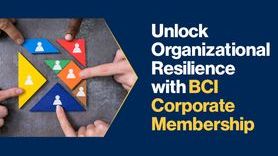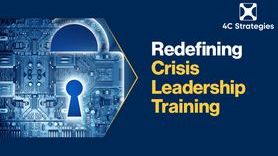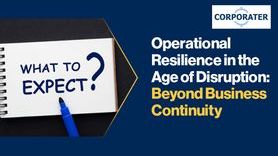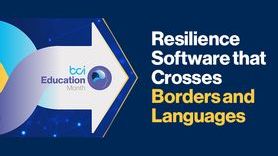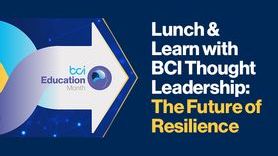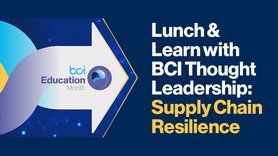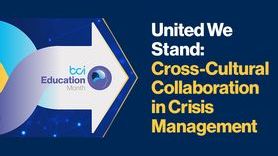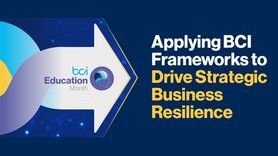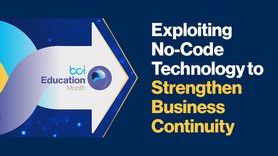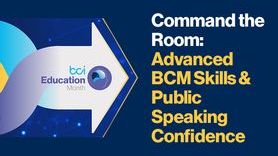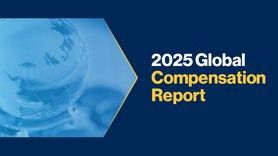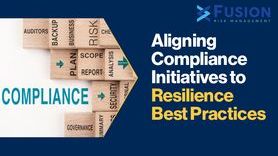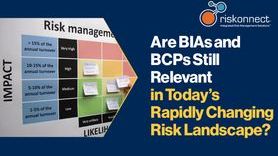Measuring Continuity: Key KPI for Senior Management

In a context of budget pressure, rising cyber risks, climate disruptions, and increasing technological dependencies, senior management is demanding a more precise and strategic understanding of business continuity.
Organizations can no longer simply claim they are prepared, they must prove it through strong, measurable, and scalable indicators.
As explained by Marie-Hélène Primeau, MBCI, CPA, Executive Vice President at Premier Continuum, during a recent Continuity Café:
“The most relevant indicators are those that show progress, maturity, and the true state of preparedness.”
Why KPIs Are Essential for Leadership
In an environment where resources are limited, executives must arbitrate between multiple priorities. Performance indicators, also known as KPIs, are therefore essential to support informed decision-making.
In our field, for business continuity to be funded, supported, and integrated into governance, the dashboard must speak the language of senior leadership.
As Marie-Hélène Primeau, MBCI, CPA clearly states:
“At all times (but especially during budget cuts) we must be able to demonstrate the relevance of the program.”
How can organizations achieve this?
- Identify concrete quantitative and qualitative performance indicators.
- Demonstrates that continuity works collaboratively with other departments, optimizing team time and strengthening overall value.
- Highlight progress, trends, engagement, and maturity, not just checkboxes.
This is precisely where the right indicators become a strategic lever.
Key Quantitative Indicators for Senior Management
There is a wide variety of KPIs in business continuity, and their relevance will vary from one organization to another.
According to Marie-Hélène Primeau, MBCI, CPA, one of the most robust approaches is to draw inspiration from:
- ISO 22301, particularly its section on management review
- The Facility Operations Maturity Model Recognition (FOMMR) by ICOR
Quantitative indicators provide a clear and comparable foundation:
1. Plan completion and update rate
- % of plans reviewed
- % of plans completed
- % of units compliant with the update schedule
Why it matters: These indicators allow leadership to immediately visualize the program’s progress and discipline.
2. Priority activities, functions, processes and program coverage
- Total number of priority activities, functions and processes identified
- Proportion with a validated plan
Why it matters: These indicators demonstrate alignment with customer commitments and essential services.
3. Exercises and testing
- Number of exercises conducted per period
- Types of exercises (tabletop, simulation, technical tests)
- Results vs. objectives
Why it matters: Exercises provide evidence of real preparedness, not just theoretical readiness.
4. Performance during real disruptions
If an incident occurred:
- Actual recovery time vs. planned RTO
- Actual data loss vs. RPO
- Speed of decision-making in crisis response
- Costs avoided
Why it matters: This is the ultimate proof that the program works.
5. Corrective action tracking
- Number of open vs. closed actions
- Accumulated delays
- Recurring vulnerabilities
Why it matters: The implementation of recommended actions demonstrates effective use of resources, or justifies the need for additional resources.
Qualitative Indicators: The True Strategic Language
In many cases, numbers alone are not enough. Leadership wants to understand where the organization stands in terms of maturity and preparedness.
During her last webinar, Marie-Hélène Primeau, MBCI, CPA suggested three insightful approaches to evaluate the quality of the program’s return on investment:
1. Defining the level of progress
Talking about progress is highly revealing.
Let’s take an example: If typically, 30% of continuity plans are completed at this point in the year, but the current rate is 10%, 50%, or even 100%, this clearly shows whether engagement has declined or improved.
It is also common to see recommendations that were meant to be resolved within six months still open a year later.
This leads us to reflect on what this indicates: Do we have enough organizational discipline? Resources? Engagement?
In all cases, associated risks must be monitored.
2. Assessing managers’ comfort level
We often hear the phrase “being ready.” But the real question should be: “What exactly are we ready for?”
For a long time, within Premier Continuum’s methodology, when departments are asked to outline their activities and strategies, they are also asked a key question:
What is your level of comfort?
Response options:
- Green: Total confidence (everything is clear and under control)
- Yellow: Conditional confidence (“it depends,” some elements still need validation or testing)
- Red: Non-operational / unfunded (without budget, implementation is not feasible)
This qualitative method makes it possible to visualize where the organization feels vulnerable, where investments are needed, or where buy-in remains weak.
With optimism, Marie-Hélène Primeau, MBCI, CPA shares:
“The good news is that business continuity is increasingly part of strategic discussions. Boards of directors are now questioning it. This greatly helps professionals in the field move things forward.”
3. Culture and engagement
Finally, other trends linked to organizational culture can be just as significant: management participation in meetings, proactivity of responsible parties, and alignment with the organization’s mission.
- Participation: Are managers attending meetings? Are they actively participating? Or is the topic consistently postponed?
- Objectives: Do the objectives truly support the organization’s mission? Do the KPIs really help decision-making? Or are they simply checkboxes for the annual meeting?
As Marie-Hélène Primeau, MBCI, CPA says:
“If teams don’t show up to my meetings, that’s already an indicator in itself!”
Conclusion: Continuity Becomes Strategic When It Becomes Measurable
Business continuity is far more than just plans and processes. It is built on a wide range of data, trends, and indicators capable of informing strategic decisions.
Indicators are not a formality, they are the showcase of the program. They must be both quantitative (measuring coverage and progress) and qualitative (measuring maturity and culture).
Senior management decides based on what it sees.
The smarter, more dynamic, and more mission-aligned the indicators are, the more the program gains in funding, visibility, and impact.
Learn more about Premier Continuum’s consulting services:
https://www.premiercontinuum.com/fr/consultation



